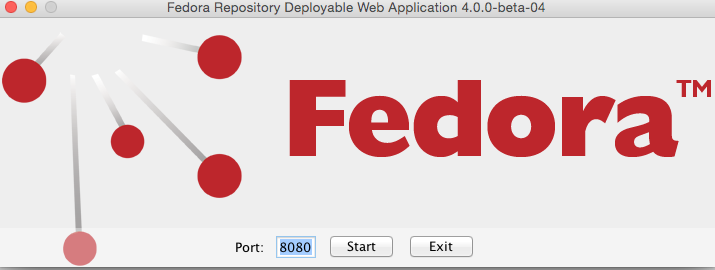This document is a guide to getting up and running with Fedora as quickly as possible.
If you are familiar with Vagrant or Docker, the following two are quick ways to get a Fedora 4 environment up quickly:
https://github.com/fcrepo4-labs/fcrepo4-vagrant
docker pull yinlinchen/fcrepo4-docker docker run -it -p 8080:8080 -p 3030:3030 -d yinlinchen/fcrepo4-docker:4.3.0 |
There are two primary ways of deploying Fedora 4. The first, One-Click Run, is an easy way to get Fedora 4 running to test out the basic features. The second, Servlet Container Install, is the approach to be used in production installations.
Either double-click on the download, or run the following command to start Fedora 4
java -jar fcrepo-webapp-<version>-jetty-console.war |
Once Fedora 4 is seen to be running at the following URL, start exploring the feature tour
http://localhost:8080/rest/ |
Note, port 8080 is the default. Replace that port number in the above URL if you used a different value.
Alternatively, instead of deploying Fedora 4 via the "one-click run", the Fedora 4 web-application can be installed by dropping the WAR file into a servlet 3 container, such as Tomcat 7 or Jetty 8.
For details on installing Fedora 4 to those containers, see the Deploying Fedora 4 Complete Guide guide.
Once Fedora 4 is running,